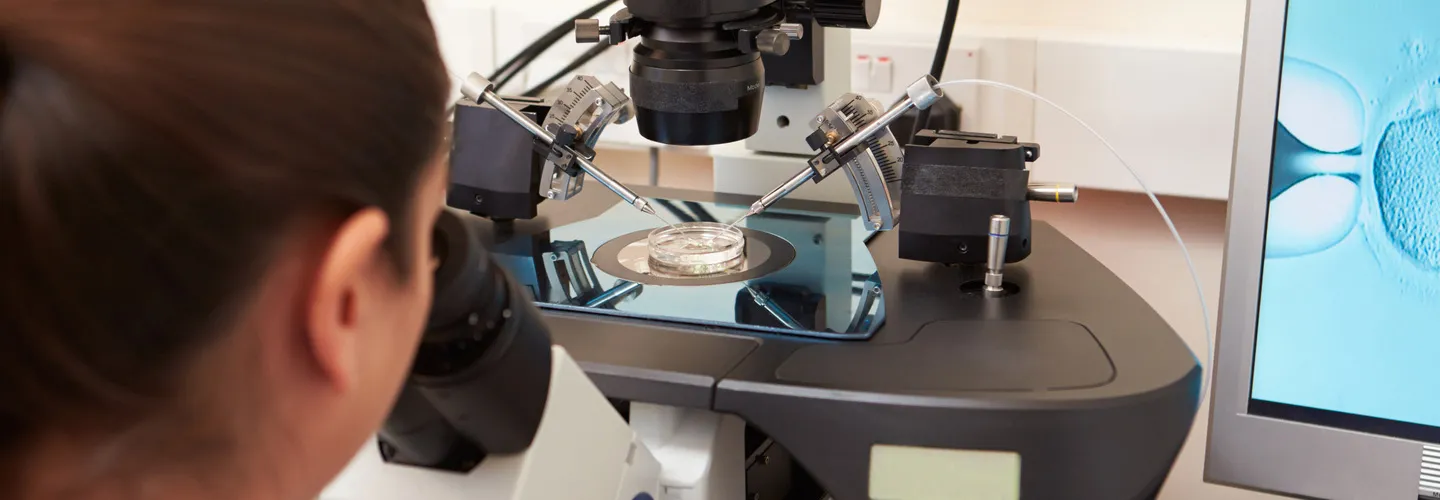Understanding the Three Main Types of IVF

Understanding the Three Main Types of IVF
In vitro fertilization (IVF) has revolutionized the field of reproductive medicine and given hope to many couples struggling with infertility. Since its inception, various methods and techniques have been developed to optimize success rates and meet individual needs. This article looks at the three main types of IVF: Conventional IVF, Intracytoplasmic Sperm Injection (ICSI), and Natural Cycle IVF. It discusses their procedures, benefits, and suitability for different patient scenarios.
1. Conventional IVF
Procedure
Conventional IVF, also known simply as IVF, is the most widely used method of assisted reproductive technology. The procedure involves several steps:
- Ovarian stimulation: Hormonal medication is administered to stimulate the ovaries to produce multiple eggs. This increases the chances of obtaining viable embryos for transfer.
- Egg retrieval: Once the eggs are mature, they are retrieved from the ovaries using a minor surgical procedure called transvaginal ultrasound aspiration.
- Fertilization: The retrieved eggs are mixed with sperm in a laboratory dish so that natural fertilization can take place.
- Embryo culture: Fertilized eggs (embryos) are cultured in a controlled environment for several days, usually until they reach the blastocyst stage.
- Embryo transfer: One or more embryos are transferred into the uterus. All other viable embryos can be frozen for later use.
Advantages
- Higher success rates: Conventional IVF generally offers higher success rates than less intensive methods due to the stimulation of multiple eggs.
- Customization: This method allows the best quality embryos to be selected, increasing the likelihood of a successful pregnancy.
- Widespread use: It is the most widely used and researched form of IVF, providing a wealth of data and experience for treatment.
Suitability
Conventional IVF is suitable for a wide range of infertility problems, including:
- Tubal infertility
- Endometriosis
- Unexplained infertility
- Infertility due to the male factor, provided that the number and quality of sperm is sufficient for fertilization without additional help
2. Intracytoplasmic Sperm Injection (ICSI)
Procedure (ICSI)
ICSI is a special form of IVF that is mainly used to treat severe male infertility. The main difference lies in the fertilization step:
- Ovarian stimulation and egg retrieval: Similar to conventional IVF, the female partner undergoes ovarian stimulation and egg retrieval.
- Sperm preparation: A sperm sample is prepared to isolate the healthiest sperm.
- Sperm injection: Instead of allowing the sperm to naturally fertilize the eggs in a dish, a single sperm is injected directly into each mature egg with a fine needle.
- Embryo culture and transfer: The resulting embryos are cultured and transferred to the uterus, following the same steps as in conventional IVF.
Advantages (ICSI)
- Overcomes severe male infertility: ICSI is particularly beneficial in cases of low sperm count, poor sperm motility, or abnormal sperm morphology.
- Higher fertilization rates: By bypassing the natural fertilization process, ICSI significantly increases the chances of fertilization, even with impaired sperm.
- Lower risk of failed fertilization: By injecting the sperm directly into the egg, the risk of failed fertilization due to problems with the sperm is minimized.
Suitability (ICSI)
ICSI is recommended for couples facing the following problems:
- Severe infertility due to male factor
- Previous IVF cycles with poor or no fertilization
- Couples who opt for a pre-implantation genetic test, as ICSI reduces the risk of contamination of the genetic material of the sperm
3. Natural Cycle IVF
Procedure (Natural Cycle IVF)
Natural Cycle IVF, also known as Minimal Stimulation IVF or Mild IVF, involves minimal or no hormonal stimulation. The procedure largely mimics the natural menstrual cycle:
- Monitoring: The woman’s natural cycle is closely monitored through blood tests and ultrasound scans to determine the optimal time for egg retrieval.
- Egg retrieval: A single mature egg is retrieved without stimulation medication.
- Fertilization: The retrieved egg is fertilized with sperm in the laboratory.
- Embryo culture and transfer: The embryo is cultivated and transferred to the uterus as in conventional IVF.
Advantages (Natural Cycle IVF)
- Less use of medication: The reduced or no use of hormone preparations reduces the risk of side effects and lowers treatment costs.
- Natural selection: The procedure relies on the body’s natural selection of the best eggs, which can be beneficial for women with a good ovarian reserve.
- Lower risk of ovarian hyperstimulation syndrome (OHSS): Minimal stimulation reduces the risk of OHSS, a potential complication of conventional IVF.
Suitability (Natural Cycle IVF)AS
Natural Cycle IVF is ideal for:
- Women who prefer a more natural approach or have ethical concerns about the use of hormones.
- Women with a good ovarian reserve who naturally produce high-quality eggs.
- Those who have experienced adverse reactions to hormonal stimulation in previous IVF cycles.
Conclusion
The three main types of IVF—conventional IVF, ICSI, and natural cycle IVF—each offer unique benefits and are tailored to the different needs of patients. Conventional IVF remains the most commonly used method. It offers high success rates by stimulating multiple eggs and selecting the best quality embryos. ICSI offers a solution for severe male infertility by injecting sperm directly into the eggs, which significantly increases the fertilization rate. Natural Cycle IVF offers a gentler approach with minimal or no hormonal stimulation, reducing the risk of side effects and costs.
Choosing the right IVF method depends on individual circumstances, including the cause of infertility, medical history, and personal preferences. A thorough consultation with a fertility specialist can help determine the most appropriate approach to maximize the chances of a successful pregnancy and fulfill the dream of parenthood.
The content has been created by Dr. Senai Aksoy and medically approved.
